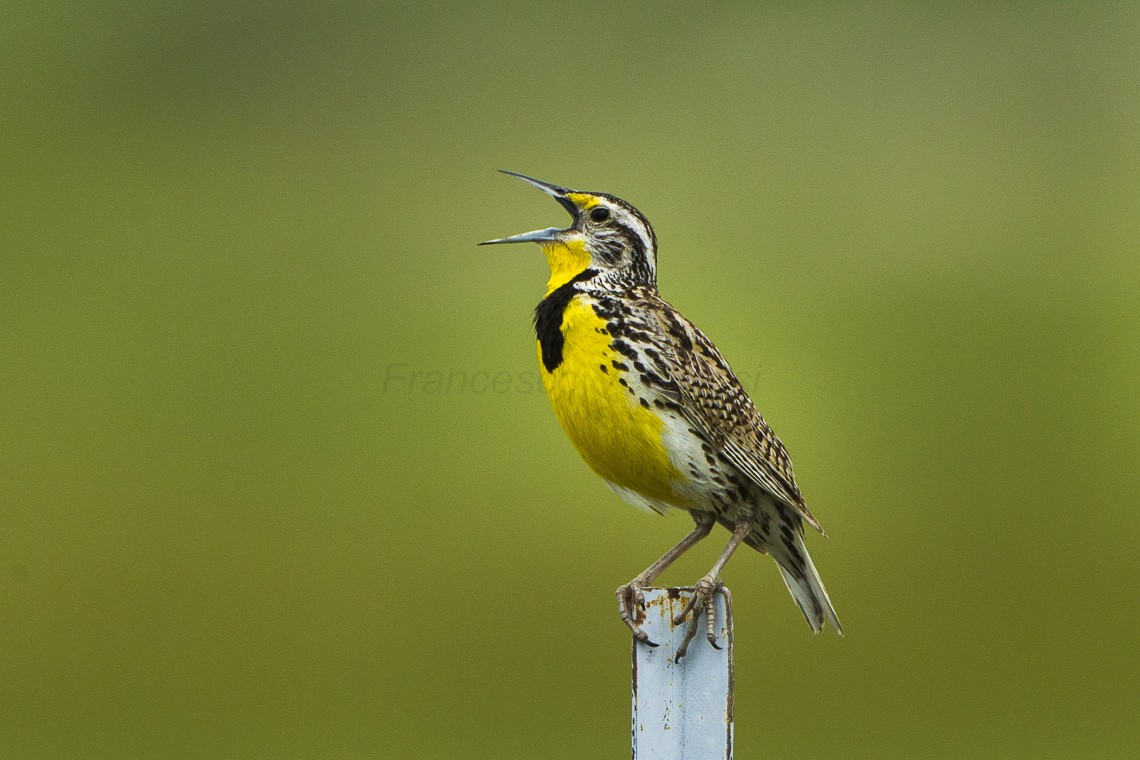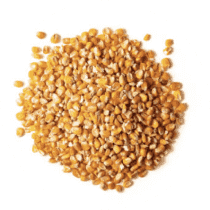Western Meadowlark
A species of North American Meadowlarks Scientific name : Sturnella neglecta Genus : North American Meadowlarks
Western Meadowlark, A species of North American Meadowlarks
Botanical name: Sturnella neglecta
Genus: North American Meadowlarks
Content
Description People often ask General Info
 Photo By Francesco Veronesi , used under CC-BY-SA-2.0 /Cropped and compressed from original
Photo By Francesco Veronesi , used under CC-BY-SA-2.0 /Cropped and compressed from original Description
Western meadowlark adults have yellow underparts with a black "V" on the breast and white flanks streaked with black. Their upper parts are mostly brown, but also have black streaks. These birds have long, pointed bills and their heads are striped with light brown and black bands. Measurements: Length: 6.3-10.2 in (16-26 cm) Weight: 3.1-4.1 oz (89-115 g) Wingspan: 16.1 in (41 cm) These birds have a flute-like warbled song. These calls contrast with the simple, whistled call of the eastern meadowlark. 
Size
23-28 cm (9-11 in)
Colors
Brown
Black
Yellow
Gray
Life Expectancy
5-8 years
Nest Placement
Ground
Clutch Size
5 - 6 eggs
Incubation Period
1 - 2 broods
Number of Broods
13 - 16 days
Nestling Period
10 - 12 days
Feeding Habits
Western Meadowlark's diet includes grains, weed seeds, insects, and occasionally the eggs of other grassland birds. They adapt their foraging to the seasons—grains in winter and early spring, weeds in fall, and insects like beetles and grasshoppers in late spring and summer using a 'gaping' technique. Winter may bring flock feeding and scavenging on carcasses.
Habitat
Western Meadowlark thrive in open grasslands, prairies, and meadows across western and central North America, from sea level to high elevations (up to 10,000 feet). These birds favor sparser, drier environments, avoiding dense woods and heavy shrubs. While some are permanent residents, northern populations may migrate south or east within their range to forage in winter.
Nest Behavior
The female western Meadowlark solely constructs the nest over 6-8 days, typically in spring.
Nest Characteristics
The nest of western Meadowlark is a ground structure often hidden by dense vegetation, possibly in a natural depression. It's shaped into a cup, lined with grasses and stems, and may feature a woven, dome-like top. Dimensions are roughly 7-8 inches wide with a 4-5 inch wide, 2-3 inch deep cup.
Dite type
Insectivorous
People often ask
General Info
Feeding Habits
Bird food type

Hulled Sunflower Seeds

Cracked Corn
Bird Feeder Type

Ground
Sounds
Song
Recording location: United States
Behavior
Western Meadowlark engage in foraging behavior on the ground in open habitats, utilizing their stout body structure to probe for insects and seeds. Their flight is characterized by short, rapid wingbeats interspersed with glides, reminiscent of quail. During the breeding season, western Meadowlark are territorial; males engage in prolonged 'pursuit flights' and distinctive 'jump flights' to assert dominion and repel competitors. Males may invest considerable time in establishing territories, often courting multiple females and subsequently providing for the young. Nesting pairs exhibit sensitivity to human presence, with a high likelihood of nest abandonment upon disturbance.
Distribution Area
The breeding habitats of western meadowlarks are grasslands, prairies, pastures, and abandoned fields, all of which may be found across western and central North America, as far south as northern Mexico. In regions where their range overlaps with the eastern species, these birds prefer thinner, drier vegetation; the two type of birds generally do not interbreed but do defend territory against one another. Their nests are situated on the ground and are covered with a roof woven from grass. There may be more than one nesting female in a male's territory. Nests are sometimes destroyed by mowing operations with eggs and young in them. Western meadowlarks are permanent residents throughout much of their range. Northern birds may migrate to the southern parts of their range; some birds also move east in the southern United States. 
Species Status
Not globally threatened.